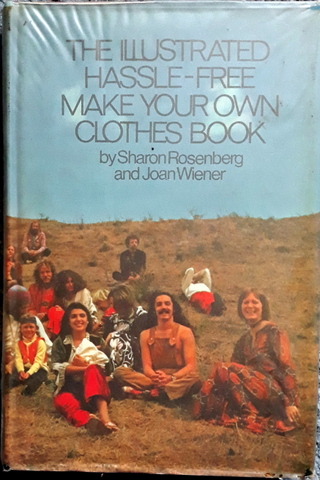There are thousands of books out there on sewing. Over the years we have collected lots of them, but these books that are not the usual type of sewing book, they focus on repair and remaking of clothes and some other clothing related subjects where there is an overlap between clothing and sustainability. We have found them handy!
Modern Mending – Erin Lewis-Fitzgerald – Affirm Press (AUS) 2020 ISBN 978 1 925927 29 0 – I would like to state at the outset that we love this book and have found it very useful. The books is divided basically into three parts. The first, introductory, part talks about what to consider before commencing the mending job, what tools are required (including making travel kit) and a little about woven and knitted fabrics. The second part covers the various techniques to be used including stitching, patching, darning, buttons, zippers etc. The third section is a series of case studies on how a particular project was mended. There is also a small section at the end of the book on miscellaneous subjects like clothing care and maintenance, mending for other people, resources and recommended reading. Lots and lots of colour photos.
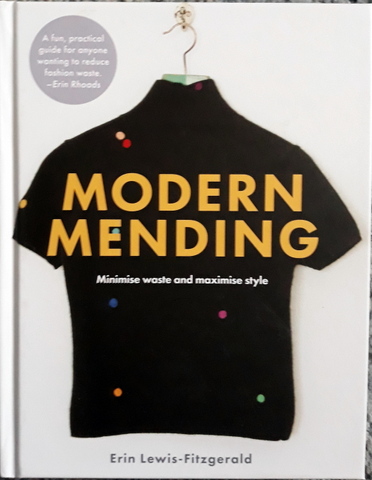
Mend it Better – Kristin M. Roach – Storey Publishing (US) 2012 ISBN 978 1 60342 56 3 – The book is a series of chapters of various sizes covering various aspects of clothing repair. Initially there is some introductory info on the evolution of sewing, how to decide if a garment is worth mending and making a mending tool kit including making a mending bag and a mending tool clutch. Techniques of stitching is also covered. This is then followed by chapters on specific mending subjects including surface fixes, seam fixes, hems, darning, fasteners and closures and zippers. There are also chapters on more fancy clothing such as lace, leather and stretch fabrics, applying decorative accents and clothing care and prevention of problems. Lots of colour photos, some coloured line drawings.
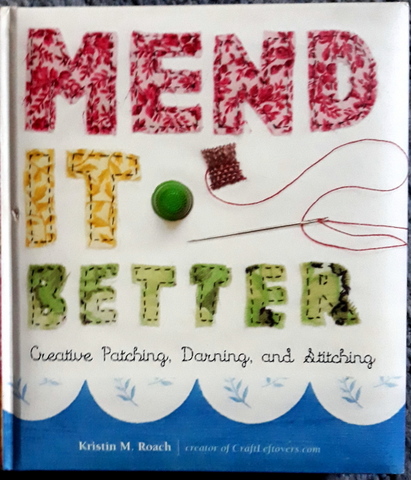
Clothing Care and Repair – Singer Sewing Reference Library (US) 1985 ISBN 0 394 73417 3 – This is part of the larger Singer reference library and is reasonably comprehensive. It covers clothing care techniques and reading care labels, stains and their treatment, washing and drying including machine drying, hand washing, laundry mishaps, dry cleaning and ironing. There is a small section on designing and organising closets for clothes storage. There is a section on clothing repair covering tools, terms and techniques and detailed information on such issues as buttons, split seams, tears, cuts and holes, hems, zippers and pockets. There is also a section on customising and updating existing clothing, but updating is to the ‘80s style, unless there is another edition. Lots of colour photos.
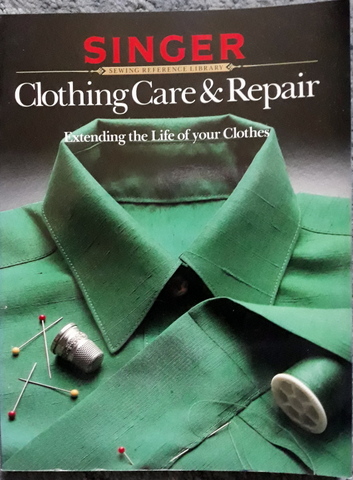
Remake it: clothes – Henrietta Thompson – Thames & Hudson(UK) 2012 ISBN 978 0 500 53632 4 – This is evidently part of a series but I can only find reference to one other book on ‘Home’. This one is interesting. There are a series of techniques about remaking clothes and accessories throughout the book, step by step line drawings, with some interesting ideas. Unfortunately in between the good information there are a whole stack of photos of people/clothing (called “design examples”) that look like the came straight off a fashion show, the sort of fashion show (you’ve seen ‘em on TV) where regular people on the street would point at the offerings laugh and say “I wouldn’t be caught dead in that!”. Waste of space in my opinion. Anyway, there is still good info here if you look for it. BTW, want a hat made from bubblewrap?
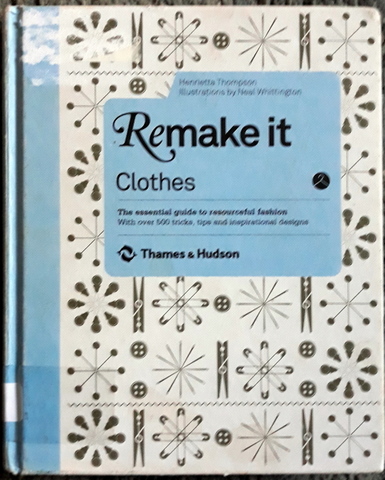
Mend It! – Maureen Goldsworthy - Mills & Boon Ltd (UK) 1979 ISBN 978 0 8128 2695 1 – The book is broken up into a number of sections covering various repair techniques. Darning both by hand and machine is covered, as is patching by hand and by machine. Repairing knitted fabrics is covered, broken down into single weft knitting, double weft knitting and warp knitting. The section on repairing specialised materials covers leather and suede in detail, pile weaves, laminated fabrics, felt, vinyl, sheer fabrics, lace and fur. The final section comprising the last half of the book is about repairing garments covering such issues as camouflage, panel replacement, seaming out, split seams, hems, buttonholes, cuffs, elbows trousers, shirts underwear and more. The book contains a few B&W photos and lots of line drawings.
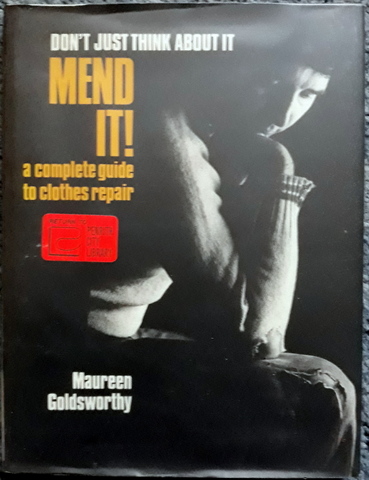
Fabulous Fit! – Patricia Perry (Ed.) – Butterick Fashion Marketing Company (US) 1977 ISBN 978 0 88421 055 9 – This one is a little different from those above, and it is more about getting existing clothing to fit better, rather than going for a whole new wardrobe if you lose or put on weight. It does come from the time when only women wanted well-fitting clothes and there is nothing about men in there. Still, the techniques discussed can be useful for maintaining fit on our changing bodies. Subjects covered include measuring the body and translating into a pattern, combining pattern sizes or styles, fitting collars, sleeves and darts, handling special fabrics and solving fitting problems. (Be warned: 70s fashions inside). Some colour photos in the middle, but mostly line drawings.

Sewing Green – Betz White – Stewart, Tabori & Chang (US) 2009 ISBN 978 1 58479 758 6 – The book is in 3 chapters. The first chapter is about ‘thinking green’ and covers repurposing sewing materials, dealing with second hand clothing, deconstructing and a review of ne eco-friendly sewing materials. Chapter 2 is a series of 25 sewing projects using repurposed, second hand or eco-friendly materials such as turning a shirt into a striped café apron, lounge pants from a bed sheet or slippers from a recycled sweater. There are lots of things to make from rugs, to cushions to a draught stopper, produce bags, shopping bags and even a heat therapy pillow with repurposed material of course. The final (small) chapter covers tools, techniques and resources. There are also eco-logic and eco-innovative stories scattered through the book on reducing textile waste, sewing lounges, green sewing spaces etc. Lots of colour photos with the odd plan/line drawing.
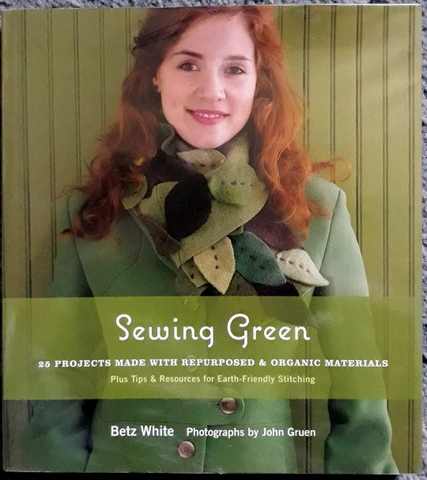
Second Skin – India Flint – Murdoch Books (AUS) 2011 ISBN 978 1 74196 721 0 – This one is more a ‘big picture’ type of book than being about detailed techniques. It starts with the role of cloth and clothing and their impact on the ecology, a review of some of the newer (and some old) natural fibres, how they are produced also there is some discussions of synthetic fabric and dyes. There is a discussion on planning your clothing wardrobe to get the most out of it, making clothes and maintaining clothes, which contains some interesting ideas, but also not much on detailed techniques. Repurposed and repurposing fashion, and dyeing are also covered. There are lots of colour photos of clothing and one chapter is set aside as a ‘gallery’ of photos of clothing – the problem is that while they are interesting as concepts, they are not the sort of thing that average people wear. (See Remake It above) Lots of colour photos.
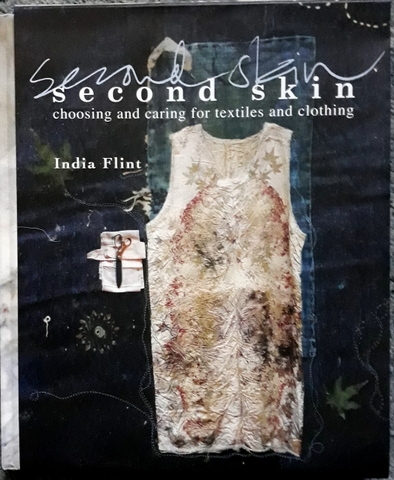
Making Simple clothes –Ida Hamre & Hanne Meedom – Adam & Charles Black (UK) 1980 ISBN 0 7136 2051 X – This book is also a bit different. It basically talks about taking a flat piece of cloth, and then using a number of techniques, turn it into simple clothing based on ideas through history going back to the Bronze Age. The book takes a style of clothing and shows diagrams of the various permutations by traditional cultures. Styles include the kanga, peplus, jellaba, poncho, Bronze Age blouse, tunic, anorak, caftan, kimono and waistcoat. The book then discusses taking body measurements and translating them into a garment. I guess the book is exactly what it says on the tin; how to make simple, traditional clothes from cultures all around the world. No colour photos but lots of line drawings.
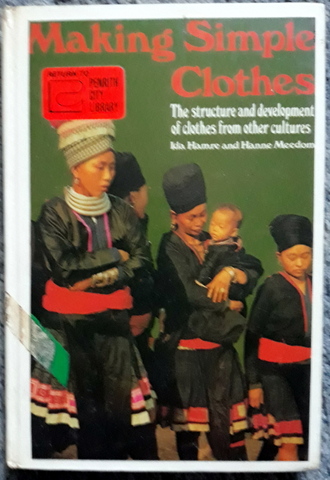
The Illustrated Hassle-Free Make Your Own Clothes Book – Sharon Rosenberg &Joan Weiner – Studio Vista (UK) 1971 ISBN 0 289 70348 4 – This book was evidently reprised by the authors in 2008 but my copy is the original. The book goes through most of the basics – tools sewing machines, terms and hints, stitches, embroidery, materials giving a page or two to each item, initially. Then, in similar style, it covers recycling scraps and waste materials, remodelling old clothes (into ‘70s styles), fixing rips and making bags, ponchos and stuff from other stuff! The book then gets serious and covers clothes for women (definitely 70s style) for 76 pages, then clothes for men (for 5 pages!), mainly just drawings. They then do ‘AC/DC clothes’ Unisex clothes, I think, for 15 pages. Kid’s clothes they give 2 pages to, as a well as some other miscellaneous stuff like shawls, scarves, ties, stuffed toys, pouches and bags. Simple clothes explained simply with lots of line drawings.
